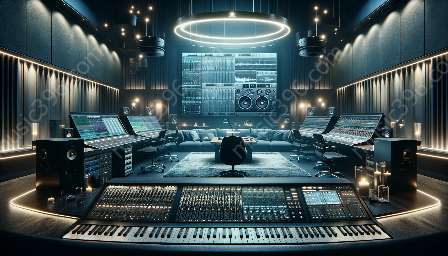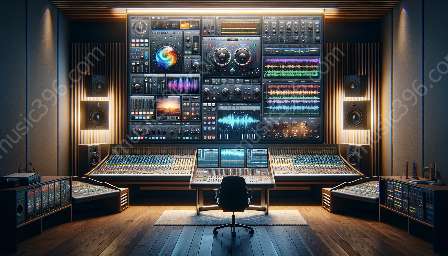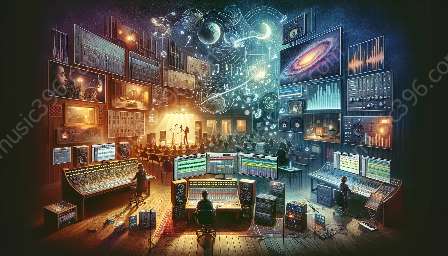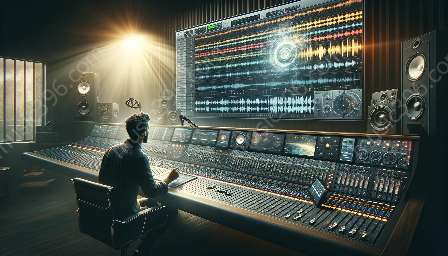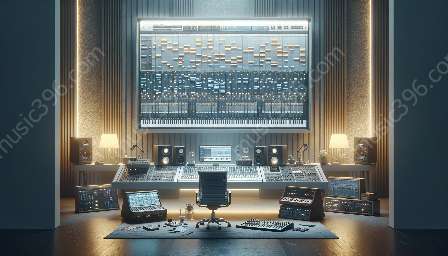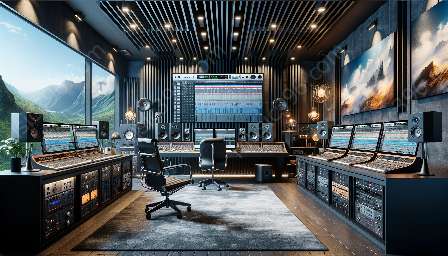When working in a digital audio workstation (DAW), understanding the differences between hardware-based audio effects processors and their software counterparts is essential for achieving the desired sound quality and production efficiency. This topic cluster will delve into the key distinctions and advantages of each technology, providing valuable insights for both beginner and experienced audio engineers.
Understanding Basic Audio Effects in DAW
Before delving into the differences between hardware-based and software audio effects processors, it's important to understand the role of basic audio effects in a DAW. Audio effects, also known as signal processing, are used to modify or enhance the sound of audio signals in various ways. Common basic audio effects in a DAW include equalization (EQ), compression, reverb, delay, and modulation effects such as chorus and flanger.
Hardware-Based Audio Effects Processors
Hardware-based audio effects processors are standalone devices that process audio signals using dedicated hardware components. These devices are typically designed for specific functions, such as EQ, compression, or reverb, and are often housed in rack-mounted units or as standalone pedals. When utilizing hardware-based processors, the audio signal is routed through the physical hardware, where the processing takes place in real-time.
Key Characteristics of Hardware-Based Processors:
- Physical, standalone devices
- Real-time processing
- Dedicated hardware components
- Physical controls and interfaces
- May have limitations in terms of processing power and flexibility
Advantages of Hardware-Based Processors:
Hardware-based processors are often prized for their tactile interface, offering hands-on control over parameters and a more intuitive user experience. They may also have a distinct sonic character that some producers prefer, and their reliability and simplicity can be advantageous in live performance settings.
Disadvantages of Hardware-Based Processors:
While hardware-based processors offer unique sonic qualities and hands-on control, they can be limited in terms of processing power and flexibility. Additionally, building a comprehensive hardware-based effects setup can be costly and may require significant physical space.
Software-Based Audio Effects Processors
In contrast, software-based audio effects processors are virtual plugins that run within a DAW's digital environment. These plugins are installed and operated on a computer, utilizing the system's processing power to manipulate audio signals. Software plugins offer a wide range of audio processing capabilities, from emulating classic hardware units to innovative digital effects.
Key Characteristics of Software-Based Processors:
- Virtual plugins within a DAW
- Operates using a computer's processing power
- Flexible and versatile
- Wide range of available effects and emulations
- Customizable with extensive parameter control
Advantages of Software-Based Processors:
Software-based processors are highly adaptable and offer a vast array of effects and processing options at a fraction of the cost of hardware units. With software plugins, users can access a wide range of emulations and innovative effects, as well as customize parameters with precision. Additionally, the portability and ease of recall of plugin settings make them ideal for modern production workflows.
Disadvantages of Software-Based Processors:
While software-based processors offer significant flexibility and cost-effectiveness, they can be dependent on the host computer's processing power, potentially leading to latency and performance issues. Additionally, some producers may find the lack of tactile control and the absence of a distinct sonic character to be disadvantages when compared to hardware-based processors.
Integration and Hybrid Approaches
Modern audio production often involves a combination of hardware-based and software-based processing. Many producers and engineers utilize hybrid setups, integrating select hardware units with software plugins to harness the benefits of both approaches. This hybrid approach allows for the tactile control and sonic character of hardware units, alongside the flexibility and extensive processing options offered by software plugins.
Conclusion
Understanding the key differences between hardware-based audio effects processors and their software counterparts within a DAW is essential for making informed decisions when crafting audio productions. By recognizing the distinct characteristics and advantages of each technology, producers and engineers can optimize their workflow and achieve the desired sonic results.

